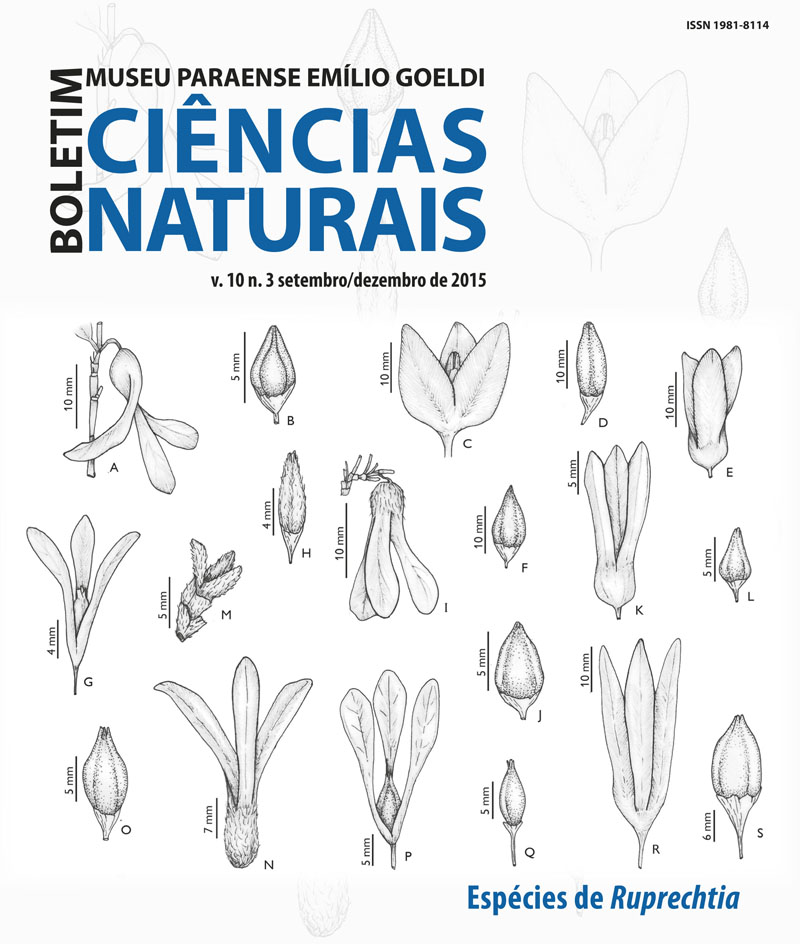Geochemical interactions between the water, suspensate and soil of the mangrove forest as a process of fertilization in Bragança, Northern Brazil
DOI:
https://doi.org/10.46357/bcnaturais.v10i3.473Keywords:
Amazon lowland, Surface geochemistry, Waterlogged soil, Mangrove soil, Soil fertilityAbstract
This study evaluated the changes in soil fertility mangrove after immersion in distilled water, present in the estuary of the Caeté river. In experiments, soil was immersed in distilled water, and determined periodically pH and Eh and available concentrations of Ca, K, Cu, Fe, P and organic C for a period of 132 days. The soils and suspensate had a similar composition, quartz, kaolinite, illite, and smectite, as well as anatase as an accessory mineral. Immersion provoked profound alterations in the fertility of the soil promotion the release of Fe and P, and changes in the availability of Ca, K and Cu. Carbon was consumed during the experiment, reducing its concentration. The pH changes from high acidity to medium acidity while the oxidized environment has changed for reduced environment for Eh -281.25 in 132 days of flooding. The study confirmed that the local gleisols are highly fertile, presence of 2:1 clay minerals and high levels of organic carbon who contributed to the considerable fertility of this soil. The study also indicates the importance of the suspensate for the maintenance of
the fertility of the soil, given its high levels of exchangeable cations and available phosphorus.
Downloads
Published
Issue
Section
License
Publication means fully assigning and transferring all copyrights of the manuscript to the journal. The Liability Statement and
Assignment of Copyrights will be enclosed with the notice of acceptance. All the authors must sign the document and return it to the journal.








